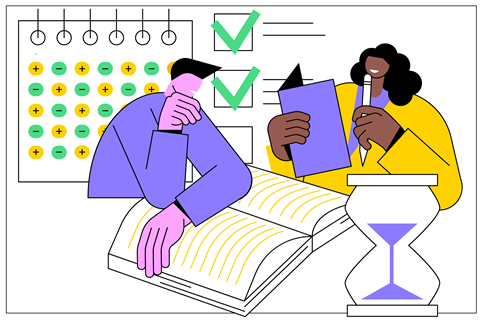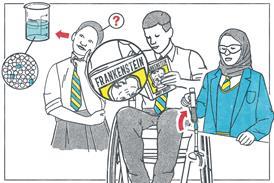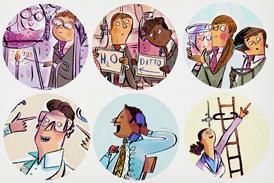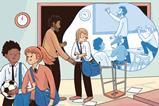Take an active approach to revision with this carousel-style activity and help students develop as independent learners
I like to make revision an active process with my 13–14 year-old learners. Recently, I used a carousel activity approach to support the consolidation of atomic structure, bonding and properties. Many learners at this level and beyond find these topics tricky, so I always aim to provide a solid foundation that they can build on in later years.

One of our school’s teaching and learning priorities is to build independent learners and to support them in evaluating their own learning. I like using this type of activity as a diagnostic tool prior to formal assessments as it provides clear evidence for learners and you as their teacher when identifying strengths and development needs.
One of our school’s teaching and learning priorities is to build independent learners and to support them in evaluating their own learning (rsc.li/3FgecCg). I like using this type of activity as a diagnostic tool prior to formal assessments as it provides clear evidence for learners and you as their teacher when identifying strengths and development needs.
Go with the flow
I usually deliver revision opportunities as a carousel activity, with learners moving to specific stations set up around the class. If you prefer, you can keep pupils stationary and move the questions around instead.
I split up the topic into digestible chunks and use exam-style command words (or past papers) for questions at each station. I include worked answers on the back of the question sheets, enabling learners to self-assess. Of course, this is open to cheating, but if students feel the need to check the answers it highlights an area of concern to be addressed. It comes down to the relationship between teacher and student and trusting that they are taking their learning seriously. I always encourage them to ask for help if they are struggling with understanding or decoding the mark scheme.
Use supportive pairings
Learners can work individually or in pairs. Sometimes in a class I have a mix to suit the students in front of me. You can let the students choose their pairs or assign them yourself: sometimes learner-chosen pairs are not effective. I like to use supportive pairings so that a student who is struggling can benefit from working with a more confident peer.
Each student can feel confident about reaching their potential
I explain the activity and why we are doing it. We discuss the importance of being honest with ourselves about where we are in our learning. We establish how much time is allocated to each station and I use an online timer on the whiteboard so everyone can see it.
Having a timer promotes good pace but can be stressful for some learners. I let them know that we can increase the time if necessary and that they can have some extra time at the end of the activity to fill in any gaps. I also include extension questions at each station to stretch those learners who answer the questions quickly.
Encourage self-assessment
Every student has a worksheet with the station number, topic area, space for their answer and any corrections they need to make, plus a box to indicate if this is an area of concern and suggested further revision activities. As they attempt the questions at each station, they write their own answers and then self-assess and write any corrections. They can reflect on how they feel about that topic and if they managed by themselves or needed help. They then identify if this is an area of concern for them or not. At the end of the whole activity, we have a chat, as a class initially but individually if some learners aren’t taking it seriously.
This activity encourages students to reflect honestly on what they struggled with and how they can improve. They also know where to look for additional activities to aid revision and consolidate tricky topics, and each student can feel confident about reaching their potential.
I have had positive feedback from learners about how beneficial this can be for directing their revision activities when preparing for assessments. The learners I tried this activity with also performed better than previous cohorts for this particular topic assessment, so I plan to not only use this technique for other topics at this level, but to adapt it for my exam-level classes, too.
More on revision
- Read our revision collection to help prepare your students for their exams.
- Share our TikTok playlist with your learners. We made 10 videos covering examiners’ top tips, common exam mistakes to avoid, quick wins and key topics, such as equilibrium and electrolysis.














No comments yet